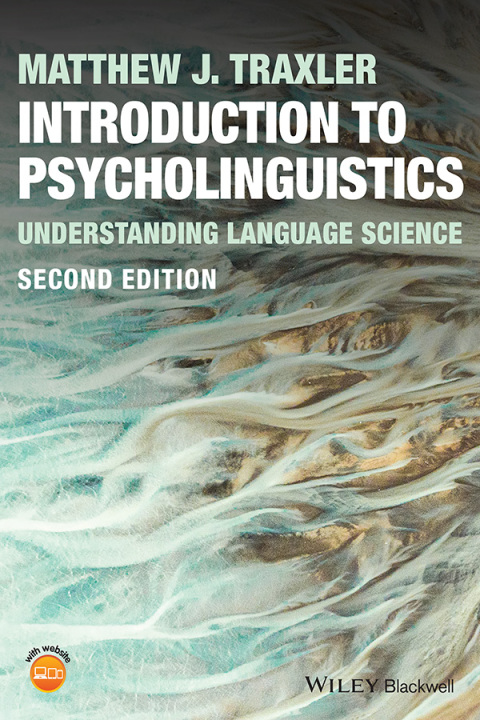Description
Efnisyfirlit
- Preface to the Second Edition
- Abbreviations
- Symbols and Units
- Constants
- Greek alphabet
- 1 Introduction to Pharmaceutical Analytical Chemistry
- 1.1 Introduction
- 1.2 Pharmaceutical Analytical Chemistry
- 1.3 This Textbook
- 2 Marketing Authorizations, Pharmaceutical Manufacturing, and International Pharmacopoeias
- 2.1 Introduction
- 2.2 Marketing Authorization and Industrial Production
- 2.3 Pharmacopoeias
- 2.4 Life Time of Pharmaceutical Preparations and Ingredients
- 3 Fundamentals of Bases, Acids, Solubility, Polarity, Partition, and Stereochemistry
- 3.1 Acids, Bases, pH, and pK a
- 3.2 Buffers
- 3.3 Acid and Base Properties of Drug Substances
- 3.4 Distribution Between Phases
- 3.5 Stereoisomers
- 3.6 Active Pharmaceutical Ingredients – A Few Examples
- 3.7 Stability of Drug Substances
- 4 Fundamentals of Pharmaceutical Analytical Chemistry
- 4.1 Pharmaceutical Analytical Chemistry
- 4.2 How to Specify Quantities, Concentrations, and Compositions of Mixtures
- 4.3 Laboratory Equipment
- 4.4 How to Make Solutions and Dilutions
- 4.5 Errors, Accuracy, and Precision
- 4.6 Statistical Tests
- 4.7 Linear Regression Analysis
- 4.8 How to Present an Analytical Result
- 4.9 Additional Words and Terms
- 5 Titration
- 5.1 Introduction
- 5.2 Potentiometric Titration and Electrodes
- 5.3 Aqueous Acid–Base Titrations
- 5.4 Titration in Non‐aqueous Solvents
- 5.5 Redox Titrations
- 5.6 Alternative Principles of Titration
- 6 Introduction to Spectroscopic Methods
- 6.1 Electromagnetic Radiation
- 6.2 Molecules and Absorption of Electromagnetic Radiation
- 6.3 Absorbing Structures – Chromophores
- 6.4 Fluorescence
- 6.5 Atoms and Electromagnetic Radiation
- 7 UV‐Vis Spectrophotometry
- 7.1 Areas of Use
- 7.2 Quantitation
- 7.3 Absorbance Dependence on Measurement Conditions
- 7.4 Identification
- 7.5 Instrumentation
- 7.6 Practical Work and Method Development
- 7.7 Test of Spectrophotometers
- 7.8 Fluorimetry
- 8 IR Spectrophotometry
- 8.1 IR Spectrophotometry
- 8.2 Instrumentation
- 8.3 Recording by Transmission, Diffuse Reflectance, and Attenuated Total Reflection
- 8.4 Instrument Calibration
- 8.5 NIR Spectrophotometry
- 9 Atomic Spectrometry
- 9.1 Applications of Atomic Spectrometry
- 9.2 Atomic Absorption Spectrometry (AAS)
- 9.3 AAS Instrumentation
- 9.4 AAS Practical Work and Method Development
- 9.5 Atomic Emission Spectrometry (AES)
- 9.6 Flame Photometry
- 9.7 Inductively Coupled Plasma Emission Spectrometry
- 9.8 Inductively Coupled Plasma Mass Spectrometry
- 10 Introduction to Chromatography
- 10.1 Introduction
- 10.2 General Principles
- 10.3 Retention
- 10.4 Efficiency
- 10.5 Selectivity
- 10.6 Resolution
- 10.7 Peak Symmetry
- 10.8 The Dynamics of Chromatography
- 11 Separation Principles in Liquid Chromatography
- 11.1 Introduction
- 11.2 Reversed‐Phase Chromatography
- 11.3 Ion‐Pair Chromatography
- 11.4 Normal‐Phase Chromatography
- 11.5 Thin‐Layer Chromatography
- 11.6 Hydrophilic Interaction Chromatography
- 11.7 Ion Exchange Chromatography
- 11.8 Size Exclusion Chromatography
- 11.9 Chiral Separations
- 11.10 Supercritical Fluid Chromatography
- 12 High Performance Liquid Chromatography
- 12.1 Introduction
- 12.2 The Column
- 12.3 Scaling Between Columns
- 12.4 Pumps
- 12.5 Injectors
- 12.6 Detectors
- 12.7 Mobile Phases
- 12.8 Solvents for Sample Preparation
- 13 Gas Chromatography
- 13.1 Introduction
- 13.2 Basic Principle
- 13.3 Instrumentation
- 13.4 Carrier Gas
- 13.5 Stationary Phases
- 13.6 Retention
- 13.7 Columns
- 13.8 Injection
- 13.9 Detectors
- 13.10 Derivatization
- 14 Electrophoretic Methods
- 14.1 Introduction
- 14.2 Principle and Theory
- 14.3 Gel Electrophoresis
- 14.4 SDS‐PAGE
- 14.5 Western Blotting
- 14.6 Isoelectric Focusing
- 14.7 Capillary Electrophoresis
- 15 Mass Spectrometry
- 15.1 Introduction
- 15.2 Basic Theory of Mass Spectrometry
- 15.3 Ionization
- 15.4 The Mass Spectrometer as a Chromatographic Detector – Data Acquisition
- 15.5 Quantitation by MS
- 15.6 Identification by MS
- 15.7 Instrumentation
- 16 Sample Preparation
- 16.1 When is Sample Preparation Required?
- 16.2 Main Strategies
- 16.3 Recovery and Enrichment
- 16.4 Liquid–Liquid Extraction
- 16.5 Solid–Liquid Extraction
- 16.6 Solid Phase Extraction
- 17 Quality of Analytical Data and Validation
- 17.1 Instrumental Signals
- 17.2 Calibration Methods
- 17.3 Analytical Procedures
- 17.4 Validation
- 17.5 System Suitability
- 18 Chemical Analysis of Pharmaceutical Ingredients
- 18.1 Pharmaceutical Ingredients, Production, and Control
- 18.2 Pharmacopoeia Monographs
- 18.3 Impurities in Pharmaceutical Ingredients
- 18.4 Identification of Pharmaceutical Ingredients
- 18.5 Impurity Testing of Pharmaceutical Ingredients (Pure Chemical Ingredients)
- 18.6 Identification and Impurity Testing of Organic Multi‐Chemical Ingredients
- 18.7 Assay of Pharmaceutical Ingredients
- 18.8 Chemical Analysis of Pharmaceutical Ingredients Not Included in Pharmacopoeias
- 19 Chemical Analysis of Pharmaceutical Preparations
- 19.1 Chemical Analysis of Pharmaceutical Preparations
- 19.2 Monographs and Chemical Analysis
- 19.3 Identification of the API
- 19.4 Assay of the Active Pharmaceutical Ingredient
- 19.5 Chemical Tests for Pharmaceutical Preparations
- 20 Bioanalysis Chemical Analysis of Pharmaceuticals in Biological Fluids
- 20.1 Bioanalysis
- 20.2 Biological Fluids
- 20.3 Bioanalytical Methods – An Overview
- 20.4 Sampling
- 20.5 Sample Preparation
- 20.6 Separation and Detection
- 20.7 Quantitation
- 20.8 Screening
- 21 Chemical Analysis of Biopharmaceuticals
- 21.1 Biopharmaceuticals
- 21.2 Biopharmaceuticals versus Small Molecule APIs
- 21.3 Biopharmaceuticals and Pharmacopoeias
- 21.4 Production of Biopharmaceuticals
- 21.5 Identification Procedures for Biopharmaceuticals (Active Substance)
- 21.6 Impurity Tests for Biopharmaceuticals (Active Substances)
- 21.7 Assay of Biopharmaceuticals (Active Substance)
- 21.8 Monoclonal Antibodies
- 21.9 Analysis of Biopharmaceutical Products
- 21.10 Bioanalysis of Biopharmaceuticals Using LC‐MS/MS
- Index
- End User License Agreement






